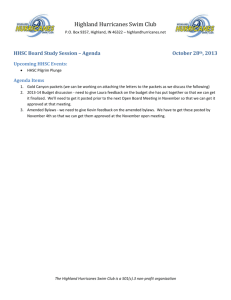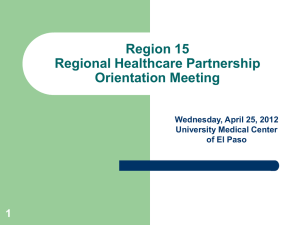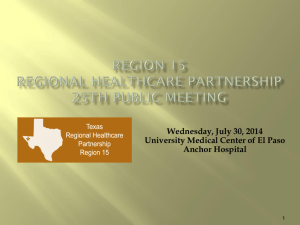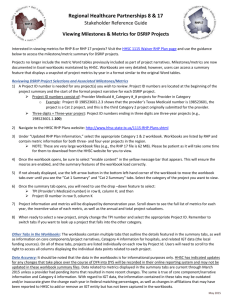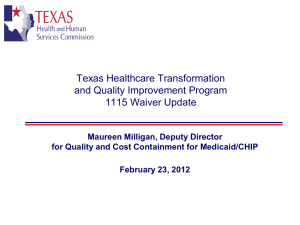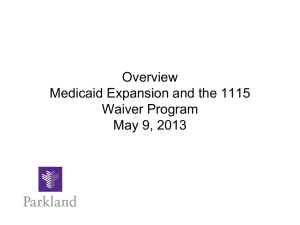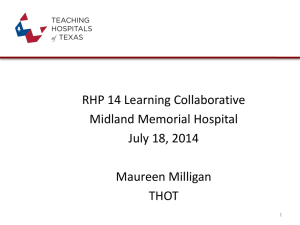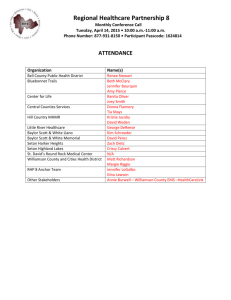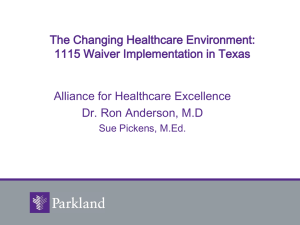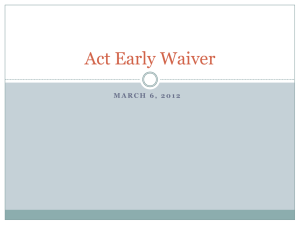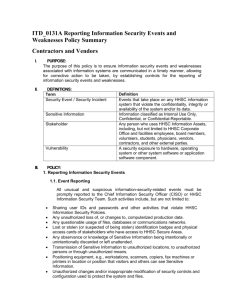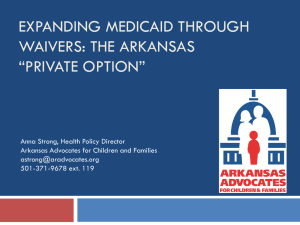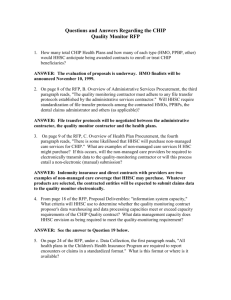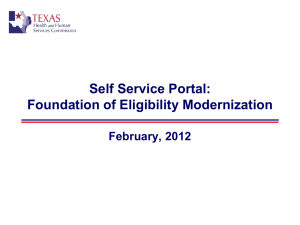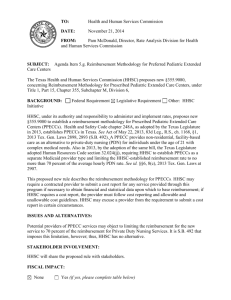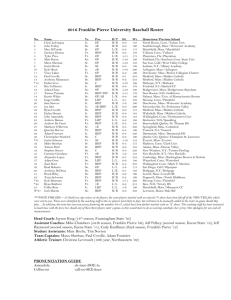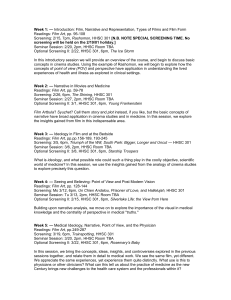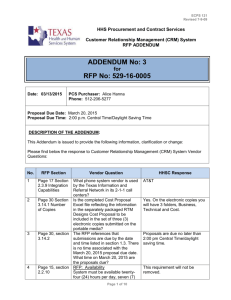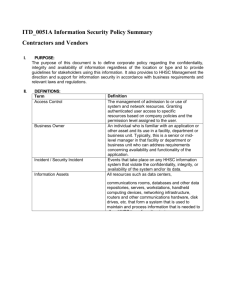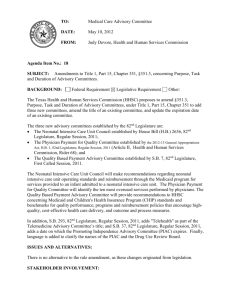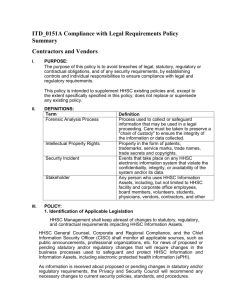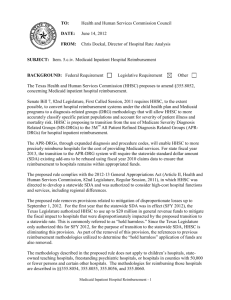Medicaid Section 1115 Waiver Overview
advertisement
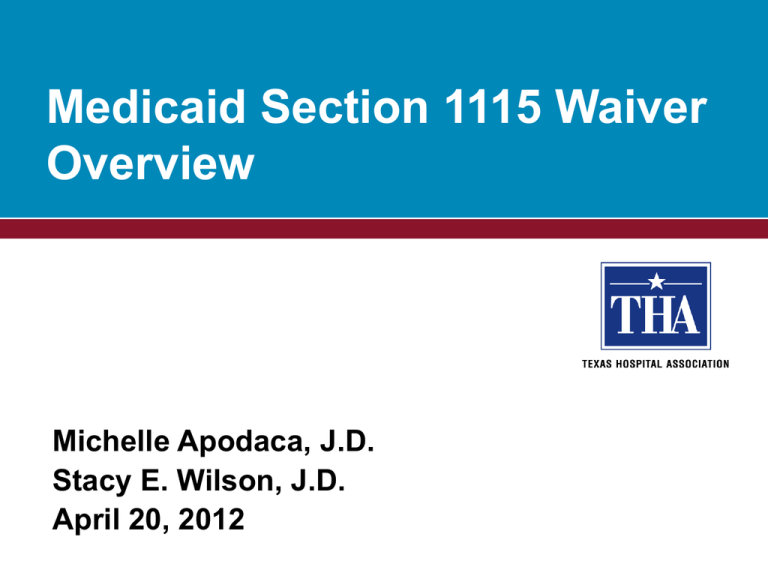
Medicaid Section 1115 Waiver Overview Michelle Apodaca, J.D. Stacy E. Wilson, J.D. April 20, 2012 Why A Waiver? Upper Payment Limit Program - $2.7 billion/year Eliminated due to statewide expansion of managed care Need to save supplemental funding to hospitals 2 Why This Waiver? California received a waiver as a pathway to health reform HHSC negotiated a waiver that both saves UPL payments and incentivizes change and improvement to healthcare delivery system 3 What Does This Waiver Do? Brings the opportunity for more money ($29 billion over 5 years vs. $14 billion under UPL) Budget neutral to the federal government Creates two funding pools – Uncompensated Care Pool – Delivery System Reform Incentive Payment Pool 4 Overview Waiver Pool Uncompensated Care Pool Pays hospitals for cost of care not compensated by Medicaid directly or through DSH Inpatient Outpatient Pharmacy Clinic Physician Hospitals eligible for funding must commit to investing in system transformation Hospitals must participate in a regional healthcare partnership to receive funds from either pool Delivery System Reform Incentive Pool Pays hospitals for achieving metrics that move toward the triple aim Category 1 – Infrastructure Development Category 2 – Program Innovation & Redesign Category 3 – Quality Improvements Category 4 – Population Focused Improvements 5 Regional Partnerships 19 regions proposed based on UPL affiliations and feedback Each region will have – Anchor – Funding public entities – Participating hospitals 6 RHP Participants Duties – Anchors Administrative functions Interface between RHP and HHSC Do not dictate how transferring entities spend their money – Transferring entities Fund waiver payments Help select DSRIP projects 7 Participating Hospitals Be an RHP member Work on incentive projects Provide expense alleviation for public entity to create IGT capacity 8 Uncompensated Care Pool Uncompensated Care – Supplements hospitals for Medicaid underpayment and uninsured – Additional categories of costs can be claimed Physicians Clinics Pharmacies 9 DSRIP Pool Project categories – Infrastructure Development • Enhance access to care – Program Innovation & Redesign • Medical homes – Quality Improvements • Preventable readmissions – Population-Focused Improvement • Diabetes, preventive care 10 RHP Plans Draft template released by HHSC – RHP Organization – Executive Overview – Community Needs Assessment – Stakeholder Engagement – Incentive Projects – Allocation of Funds – Affiliation Agreements Public input into plan 11 State Fiscal Year 2012 – transition payments based on prior UPL payments March 2012 – HHSC submitted UC Tool to CMS April – HHSC has distributed DSRIP draft project menu May 1 – RHPs to submit RHP areas and participants to HHSC August 31 – HHSC to submit RHP areas and participants and DSRIP project menu to CMS Sept. 1 - RHPs to submit plans to HHSC October 31 – HHSC to submit final RHP Plans to CMS 12 Opportunities Scorecard on Local Health System Performance Challenges Aggressive timeline Many vital pieces still under development IGT capacity - sufficient local dollars to access available federal funds Politics Balance between structure and flexibility 14 Resources HHSC website: http://www.hhsc.state.tx.us/1115-waiver.shtml THA website: http://www.tha.org/waiver Harris County Hospital District’s waiver website: http://www.1115waiver.com Stacy E. Wilson - 465-1027; swilson@tha.org Michelle Apodaca – 465-1506; mapodaca@tha.org 15
